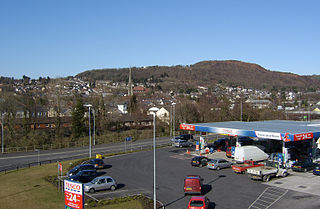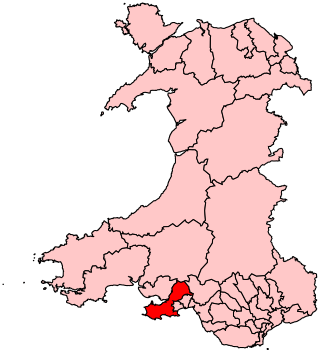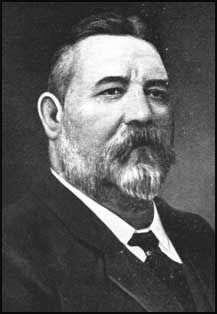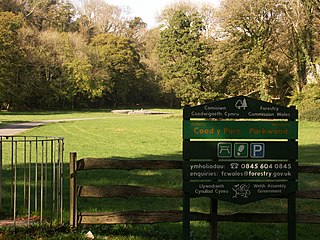Related Research Articles

Briton Ferry is a town and community in the county borough of Neath Port Talbot, Wales. The Welsh name may indicate that the church, llan, is protected from the wind, awel. Alternatively, Sawel may be a derivative of Saul, St Paul's earlier name. He once landed at Briton Ferry. An alternative Welsh name unused today is Rhyd y Brython, a direct translation of Briton Ferry. The Normans referred to the River crossing as La Brittonne and Leland in 1540 as Britanne Fery.

Pontardawe is a town and a community in the Swansea Valley in Wales. With a population of 6,832 in 2011, it comprises the electoral wards of Pontardawe and Trebanos. A town council is elected. Pontardawe forms part of the county borough of Neath Port Talbot. On the opposite bank of the River Tawe, the village of Alltwen, part of the community of Cilybebyll, is administered separately from Pontardawe. Pontardawe is at the crossroads of the A474 road and the A4067 road. Pontardawe came into existence as a small settlement on the northwestern bank of the Tawe where the drovers' road from Neath and Llandeilo crossed the river to go up the valley to Brecon.

The River Taff is a river in Wales. It rises as two rivers in the Brecon Beacons; the Taf Fechan and the Taf Fawr before becoming one just north of Merthyr Tydfil. Its confluence with the River Severn estuary is in Cardiff.

Treforest is a village in the south-east of Pontypridd, in the county borough of Rhondda Cynon Taf, Wales. It is situated in the Treforest electoral ward, along with the village of Glyntaff. It is part of the Pontypridd Town community. Treforest runs along the west bank of the River Taff, while Glyntaff runs along its east bank.

Gower is a constituency created in 1885 and represented in the House of Commons of the UK Parliament by one Member of Parliament (MP). Tonia Antoniazzi of the Labour Party became its MP after winning it from Conservative Byron Davies in the 2017 UK general election. Her party had previously represented the seat from 1909 until 2015.

The Swansea Canal was a canal constructed by the Swansea Canal Navigation Company between 1794 and 1798, running for 16.5 miles (26.6 km) from Swansea to Hen Neuadd, Abercraf in South Wales. It was steeply graded, and 36 locks were needed to enable it to rise 373 feet (114 m) over its length. The main cargos were coal, iron and steel, and the enterprise was profitable.

Port Talbot Steelworks is an integrated steel production plant in Port Talbot, West Glamorgan, Wales, capable of producing nearly 5 million tonnes of steel slab per annum. This makes it the larger of the two major steel plants in the UK and one of the largest in Europe. Over 4,000 people work at the plant. The majority of the slab is rolled on-site at Port Talbot and at the Newport Llanwern site to make a variety of steel strip products. The remainder is processed at other Tata Steel plants or sold in slab form. The works covers a large area of land which dominates the east of the town. Its two blast furnaces and steel production plant buildings are major landmarks visible from both the M4 motorway and the South Wales Main Line when passing through the town.

Ystalyfera is a former industrial village and community in the upper Swansea Valley, on the River Tawe, about 13 miles (21 km) northeast of Swansea. It is an electoral ward and a community in the unitary authority of Neath Port Talbot, Wales, comprising a resident population of just over 3,000 people, approximately 60% of whom speak Welsh.

William Abraham, universally known by his bardic name, Mabon, was a Welsh trade unionist and Liberal/Labour politician, and a member of parliament (MP) from 1885 to 1920. Although an MP for 35 years, it was as a trade unionist that Abraham is most well known. Initially a pioneer of trade unionism, who fought to enshrine the principle of workers' representation against the opposition of the coal-owners, he was regarded in later life as a moderate voice believing that disputes should be solved through conciliation rather than industrial action. This drew him into conflict with younger and more militant leaders from the 1890s onwards. Although the defeat of the miners in the Welsh coal strike of 1898 was a clear defeat for Mabon's strategy, his prestige was sufficient to ensure that he became the first president of the South Wales Miners' Federation which was established in the wake of the dispute. Abraham was noted for his powerful speaking voice, and was a renowned orator in English and Welsh.
This article is about the particular significance of the year 1860 to Wales and its people.
This article is about the particular significance of the year 1843 to Wales and its people.

Pontardawe Town F.C. are a football club based in the town of Pontardawe. They play in the Cymru South, the second tier of the Welsh football pyramid.

Parc le Breos was a great medieval deer park in the south of the Gower Peninsula, about eight miles (13 km) west of Swansea, Wales, and about 1+1⁄4 miles (2.0 km) north of the Bristol Channel. The park was an enclosed, oval area of 6.7 miles (10.8 km) in circumference, covering about 2,000 acres (810 ha) and measuring 2+1⁄2 miles (east–west) by just over 1+3⁄4 miles. Parc le Breos was established in the 1220s CE by John de Braose, Marcher Lord of Gower and husband to Margaret Ferch Llywelyn, Llywelyn Fawr's daughter. Other than for deer husbandry, the park received an income from agistment, pannage, and from sales of wild honey, ferns and dead wood. There is evidence of rabbit warrens in the park. Whether the warrens were free or domestic is unknown.
The South Wales Record Society is a text publication society. It was established in 1982 as the successor to the South Wales and Monmouth Record Society with the aim of publishing important manuscript sources relating to South Wales.

Blaenavon Ironworks is a former industrial site which is now a museum in Blaenavon, Wales. The ironworks was of crucial importance in the development of the ability to use cheap, low quality, high sulphur iron ores worldwide. It was the site of the experiments by Sidney Gilchrist Thomas and his cousin Percy Gilchrist that led to "the basic steel process" or "Gilchrist–Thomas process".
Frederick William Gibbins was a Welsh businessman and Liberal Party politician.

The Melingriffith Tin Plate Works were post medieval tin and iron works located on Tŷ-mawr Road, in Whitchurch, Cardiff, Wales. Founded sometime before 1750, it was the largest tin-plate works in the world by the end of the 18th century. Subsequent to the closure of tin plate works in 1957, the 200-year-old Melingriffith water pump was named a scheduled monument. It is one of the earliest and most important works of its kind, and may be "the most notable surviving monument of the tinplate industry".

The Atlantic Trading Estate is an industrial estate in Barry, Vale of Glamorgan, south Wales, UK. It is situated near the mouth of the Cadoxton River which flows into the Bristol Channel at the Bendricks to the south-east of Barry Docks. It is accessed via the Associated British Port-owned Wimbourne Road from Ffordd-y-Mileniwm near Weston Square, Cadoxton or from the public Hayes Road from the Main B4267 Sully Moors Road, south-west of the village of Sully. It is sometimes considered to be in Sully. It covers an area of 9.22 acres (3.73 ha). It covers an area of 9.22 acres (3.73 ha).

Charles Wilkins of Merthyr Tydfil, Glamorganshire, was a prolific writer of historical accounts of Wales and its industries. He produced pioneering reference works on the histories of Merthyr Tydfil and Newport; the coal, iron, and steel trades of South Wales; and Welsh literature. He was also founding editor of The Red Dragon: The National Magazine of Wales.

The Treforest tinplate works in Treforest, Wales, operated between the late 18th century and 1939. The six remaining buildings on the site were constructed in the mid 19th century during which time the iron and tinplate industries were dominated by South Wales. These buildings form the best surviving group of tinplate manufacturing buildings in the region and are Grade II* listed.
References
- ↑ Hughes, Stephen; P. R. Reynolds (1988). A guide to the industrial archaeology of the Swansea region. Association for Industrial Archaeology in association with the Royal Commission on Ancient and Historical Monuments in Wales and the South West Wales Industrial Archaeology Society. p. 21. ISBN 978-0-9508448-2-4.
- ↑ Jackson, P. W. (2001). The letter-books of W. Gilbertson & Co. Ltd., Pontardawe 1890-1929. South Wales Record Society. p. 8. ISBN 978-0-9521783-8-5.
- ↑ Parry, Gwenfair; Mari A. Williams (1999). The Welsh language and the 1891 census. University of Wales Press. p. 469. ISBN 978-0-7083-1536-1.
- ↑ Minchinton, Walter E. (1957). The British tinplate industry, a history. Clarendon Press. p. 109. OCLC 1815254.